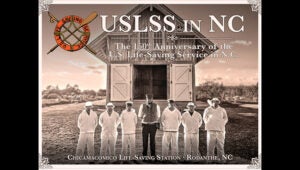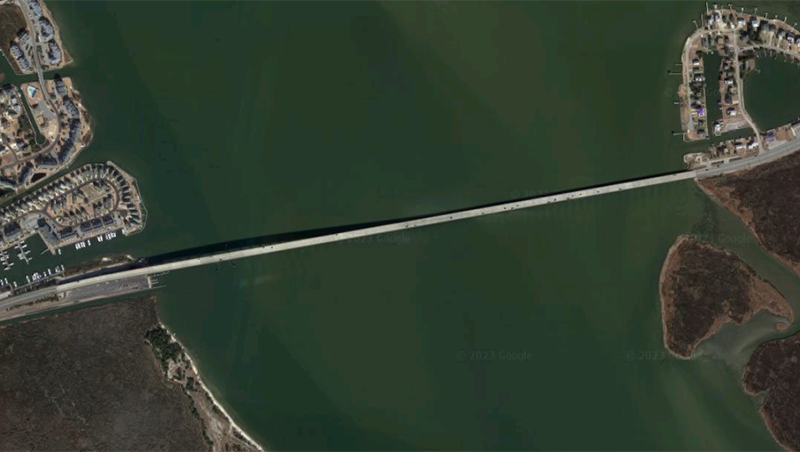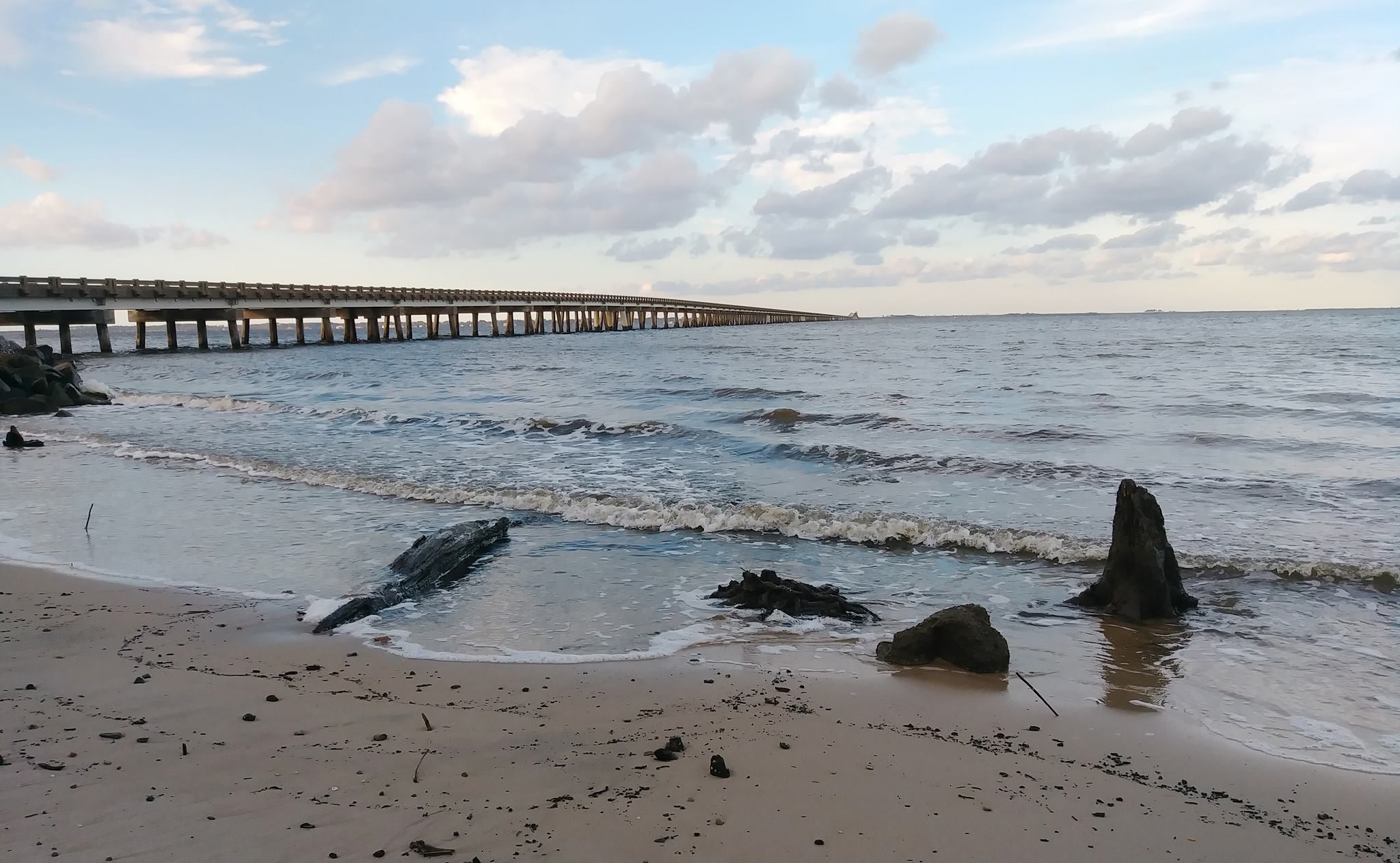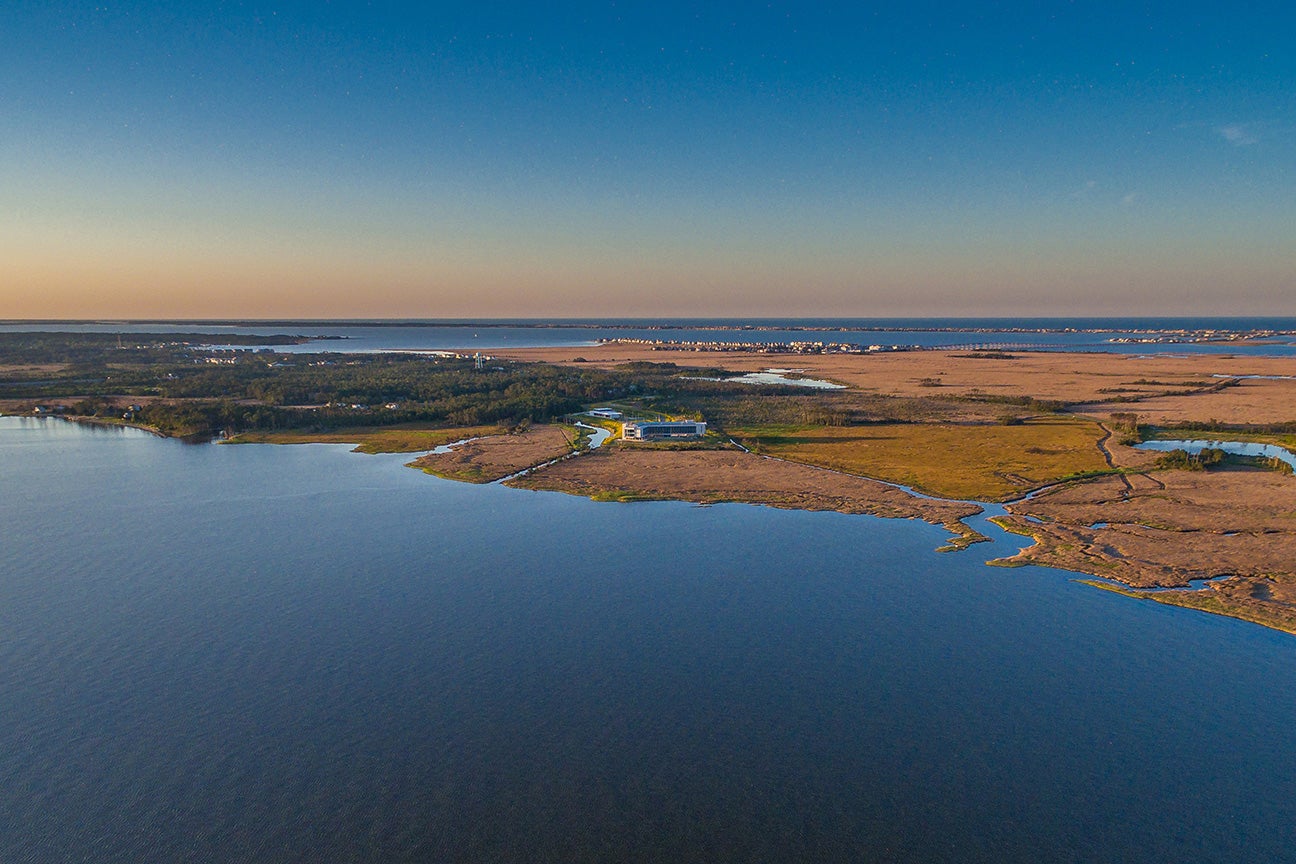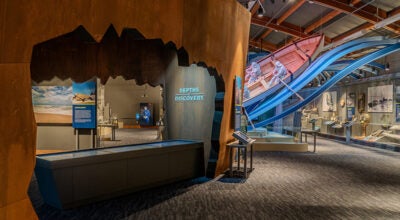USLSS in NC: The indomitable spirit
Published 8:38 am Wednesday, March 27, 2024
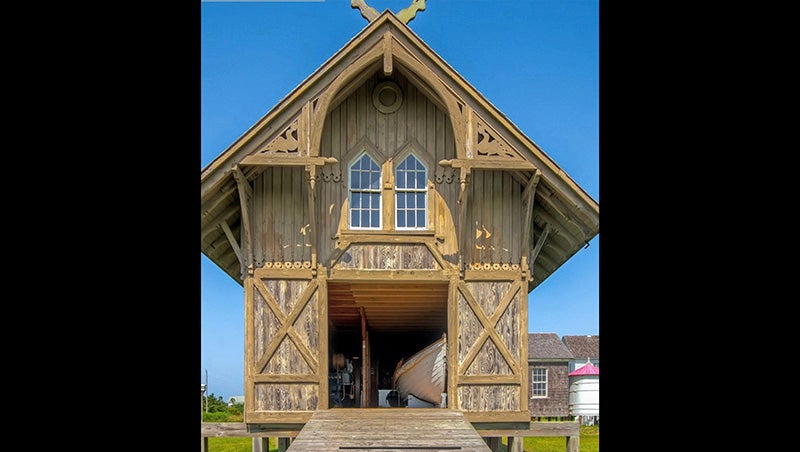
- Courtesy of CLSS
|
Getting your Trinity Audio player ready...
|
By Jen Carlson
In the early morning hours of October 4, 1881, the schooner Thomas J. Lancaster was caught in a heavy squall and ended up grounding about three and a half miles north of the Chicamacomico Life-Saving Station. There were thirteen all told on the vessel that included Captain Hunter’s wife and three children. The crew of the vessel launched a large boat over the side of the vessel with the intention of trying to land on shore at daybreak. Four crew members got into the boat to try to prevent it from being smashed against the side of the stranded vessel while others began collecting supplies and clothing to put in the boat.
Very soon, a red light was spotted from shore which turned out to be the Coston light carried by a surfman on patrol who spotted the wreck. By now, the boat was in trouble as they were having bail water out of the boat with a bucket. The sea ended up sweeping the boat away from the schooner and two of the crew were lost at sea while a third man ended up breaking his leg. The crew still in the boat called for help and their shipmates hauled them back on board. About this time, the vessel started breaking up from the continuous assault of the waves. Waves were also starting to sweep passengers and crew overboard and they began lashing themselves to parts of the schooner in an attempt to not be pulled into the water.
Surfman Benjamin O’Neal was the patrolman who spotted the wreck. After burning his Coston light to signal to the schooner help was coming, he started for the station to alert Keeper Little Bannister “Capt. Ban” Midgett III and crew. Just after daybreak, the crew, including a volunteer, Stanley Midgett, who had been hauling wood to the station, started out with the mortar-cart containing the beach apparatus. Unfortunately, the force of the gale winds soon made them stop. Two neighbors with horses joined them and once again, they started towards the wreck fighting the winds with every step. After not meeting the north patrol, the south patrolman realized something was amiss and caught up with the crew where he also hitched his horse to help pull the cart through the almost knee-high water that was littered with debris from the wreckage. It took eight men and three horses two hours to pull the mortar-cart through the winds that were later confirmed to be about 65 mph.
As soon as possible, the gun was placed into position and fired. The first shot landed through the mizzen rigging but before the crew on board could reach the whip-line, the strong current pulled the line back into the water. The second and third shots parted the line but the fourth shot was successful and a crewman tied the line around the jib-boom.
By now, Keeper Richard Etheridge and the crew from the Pea Island station arrived to assist the exhausted Chicamacomico crew. A lookout from their station had spotted the wreckage through their tower window and as soon as they could, they headed toward scene with their boat-wagon loaded down with equipment.
The men on schooner had attempted to haul the whip-line on board but exhaustion kept them from being able to pull it further. Multiple times, the crew on shore adjusted the angle of the line trying to use the waves to help raise the whip-line higher but to no avail. The crew on board made the shot-line fast, only about halfway up the whip-line. After seeing nothing else could be done to make a beach apparatus rescue successful, the two keepers decided Keeper Etheridge and some of the surfmen should travel on horseback back to the Chicamacomico station to retrieve the surfboat with the hope that the survivors could be rescued by nightfall.
While the men were gone, some seamen aboard the vessel decided to jump overboard to attempt to reach land safely. Keeper Midgett and some additional men were able to reach one man in the breakers to pull him to safety but another was lost to the strong current. After trying to reach the man lost to the sea, Keeper Midgett collapsed on the sand from exhaustion and was loaded onto the station cart along with the sailor who had been pulled from the water to be taken back to the station. During the trip back, Keeper Thomas P. Midgett from the Cedar Hummock station passed the cart carrying Captain Ban who requested that Keeper Midgett do all he could to rescue the survivors.
Arriving on scene mid-afternoon, since he was senior in command, Keeper T. Midgett determined to try to send cork jackets off to the wreck but repeated attempts failed. Just before dark, Keeper Etheridge and men returned to the scene without the surfboat because they hadn’t been able to haul it up the beach. Now having gone without food and rest for about 24 hours, the crew from the Pea Island station decided to return home to get something to eat and resume their patrols through the night. Keeper T. Midgett also left the scene to return to his station and instructed the Chicamacomico crew to keep watch. Later in the evening, Captain Ban returned to the scene after resting and by using four horses, was finally able to bring the surfboat to the scene. The Chicamacomico crew remained on the beach all night and attempted to launch the boat multiple times but were not able to clear the breakers.
Around 8 o’clock the following morning, about 24 hours after arriving on scene, they were finally able to get through the breakers to arrive at the side of the stricken vessel. Two surfmen scurried aboard and found only six that had survived the night, two of whom were the captain’s wife and one of his children. The survivors were carefully loaded on the surfboat and were brought to safety. After they landed, crew members from the Bodie Island, Pea Island and Cedar Hummock stations met the surfboat on shore ready to assist in any way necessary.
The survivors were taken to the Chicamacomico station and were made as comfortable as possible. Unfortunately, the child didn’t survive due to exposure from the elements so Mrs. Hunter had constant companionship from either Keeper Midgett’s wife or one of the other local women while she remained at the station. The Women’s National Relief Association sent a box of clothing and other essentials to be given to the survivors who were completely destitute. Of the victims lost, only one body was not recovered and the victims that were recovered were tenderly cared for by the crew and were given a proper burial.
After accusations were made against the crew for robbing the bodies before burial, an investigation was done by the assistant inspector of the Sixth District, Lt. Frank H. Newcomb, who came to the conclusion that no blame rested on the Chicamacomico crew for the failure to rescue the crew of the Lancaster sooner than what they did. From where the wreck occurred, it appears a mistake in the vessel’s course was made by mistaking the Bodie Lighthouse for the Cape Hatteras light. The vessel itself also had alterations that may have accounted for the way she broke up so soon after stranding. Then, the failure of the crew to haul the whip-line to tie it to the highest point of the wreck prevented the breeches buoy from being used in a timely manner which would have allowed survivors to be brought to shore safely in a short period of time. Lt. Newcomb also proclaimed the accusations against the station crew were cruel and unjust and were entirely without foundation because the men had not only provided for the survivors but also made coffins for those lost at their own expense without expectation of compensation.
The crews from the Chicamacomico and Pea Island stations had done their best to assist those on the Thomas J. Lancaster and the fact they hadn’t been successful would have bothered them greatly as they all had a belief that everyone would be rescued from the wreck in a short period of time. Their indomitable spirit is why we are honoring their #LegacyofLifeSaving.
All in a Day’s Work
Sometimes it’s just being a guide to those who are in need: On September 28, 1882, the mid-watch patrol of the Whale’s Head LifeSaving station (originally named Jones Hill) stumbled upon seven men wet and shivering on the beach. Earlier the previous evening, the Cuban steamer Damuji had anchored about half a mile from shore about two miles south of the station. She made no signal and showed no sign of distress when the crew from the station first noticed her. About midnight, the Whale’s Head south patrol had passed the steamer on his way south in her same location. When he returned about two hours later, he came upon the Damuji crew who had literally jumped ashore after her cables broke and the steamer was driven onto the beach nearly high and dry. He guided them to the station where they were provided with food and warm, dry clothing as they were made comfortable for several days until the Damuji could be towed to port for repairs.
We hope you will join us October 11-13, 2024 in celebration as we recognize the #LegacyofLifeSaving and the lasting impact of these often-unsung heroes. Go to chicamacomico.org for details of the events.
READ MORE IN THIS SERIES HERE:
SUBSCRIBE TO THE COASTLAND TIMES TODAY!


